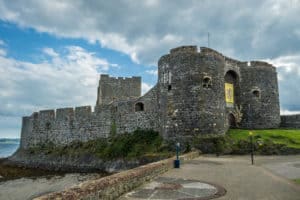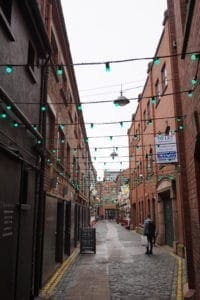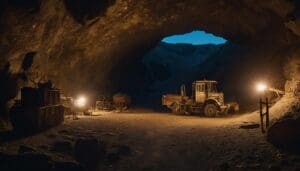Fairy Forts and Their Folklore in Ireland: Unveiling Mythical Legacies
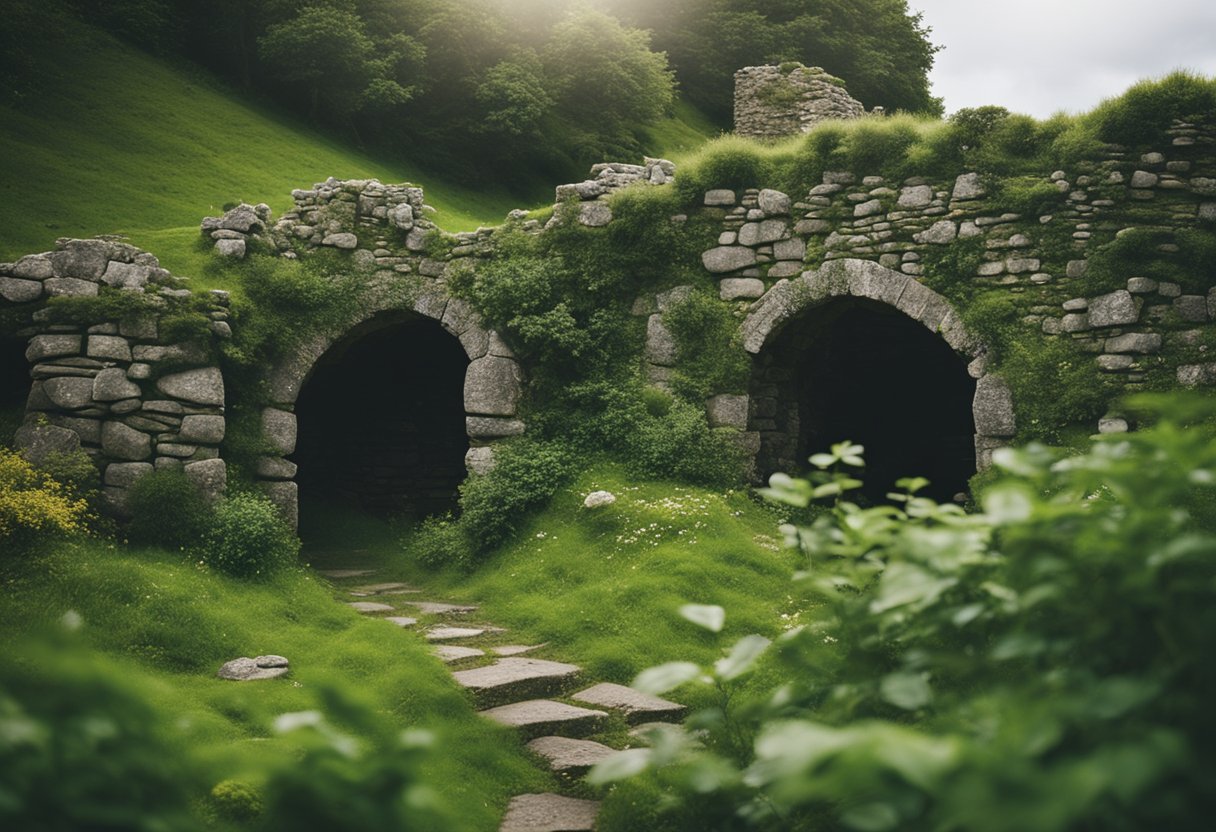
Updated On: April 15, 2024 by Maha Yassin
Fairy forts, or ringforts as they are sometimes known, dot the Irish landscape, inviting intrigue and storytelling. In Ireland, land and legend weave together in a tapestry of folklore where supernatural forces are believed to exist side by side with the physical world. Fairy forts are a remarkable testament to such beliefs and Ireland’s rich archaeological heritage. Considered sacred in folklore and endowed with an air of mystique, these ancient structures prompt us to reflect on the lives of our ancestors and the stories they inspired.
Peering into Ireland’s past, these earthen and stone remnants are historical markers denoting settlement patterns from as far back as the Iron Age through the early medieval period. Their circular designs, often enveloped by nature, have given rise to numerous tales of fairies and other otherworldly beings. Preserving these sites speaks volumes about our respect for tradition and heritage. Exploring them, one steps into a realm where history and myth blur, revealing a world where the mischievous and benevolent forces of fairies are said to play a role in the daily lives of rural communities.
Historical and Archaeological Significance
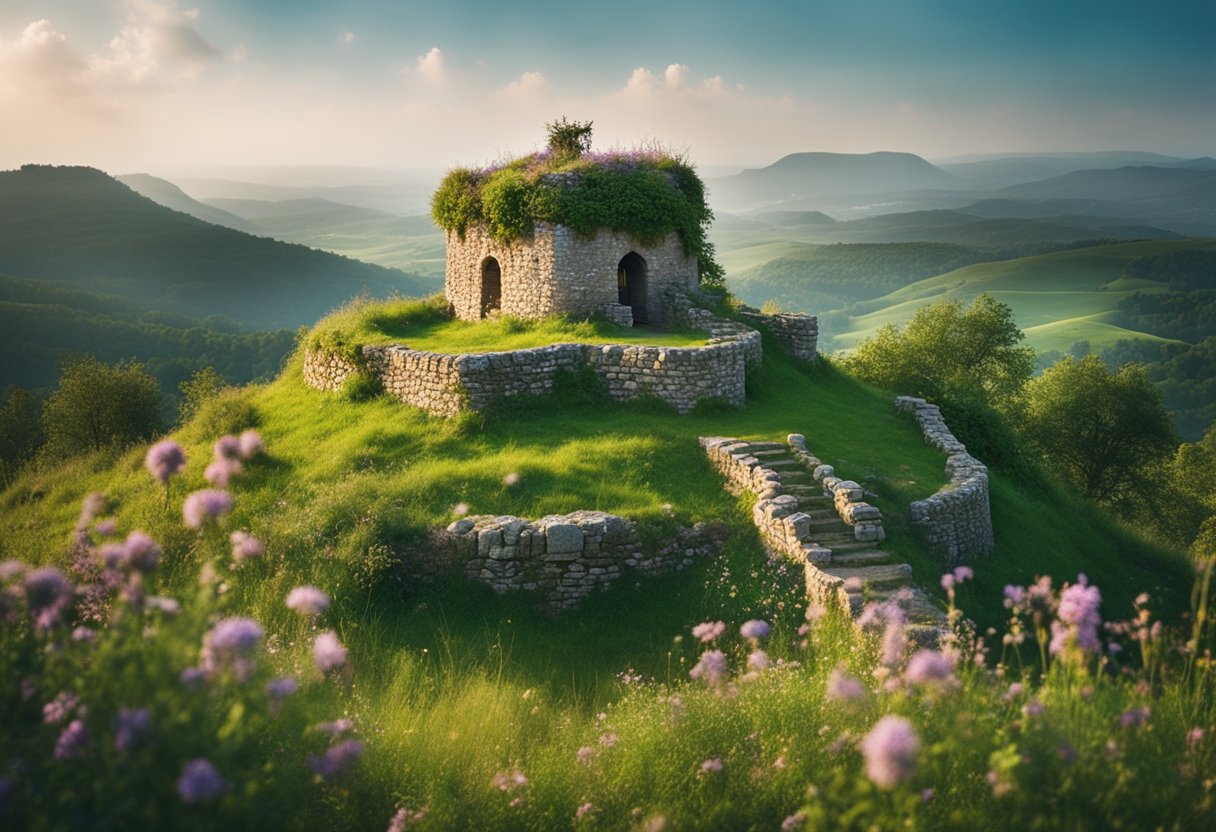
Fairy forts hold great importance for their historical and archaeological significance in Ireland. These ancient structures provide insight into the early settlements, reflecting the agricultural and defensive practices of the past. Let’s delve into their origins and what recent archaeological efforts have revealed.
Early Settlements and Agricultural Practices
Archaeologists have identified fairy forts as remnants of early settlements dating back to the Bronze Age and throughout the Iron Age. These forts, ringforts, were primarily agricultural homesteads with circular embankments as protective barriers. Our research into these sites indicates a complex social structure and self-sufficient farming communities that characterised the medieval period in Ireland.
Scientific Studies and Archaeological Discoveries
Scientific studies show that fairy forts are far more than just quirky landscape features. These ancient monuments serve as a testament to the intricate lives of our ancestors. Archaeological discoveries within these fairy forts have yielded artefacts that allow us to piece together life in ancient Ireland. They have become crucial touchstones for understanding the progression from nomadic lifestyles to permanent settlements. National monuments connect the physical and mythological landscapes, bridging centuries of Irish history.
Fairy Forts in Irish Folklore
Fairy forts are captivating features of Irish landscapes, ingrained deeply in the folklore and traditions of Ireland. They have long fascinated those who walk the emerald isles, weaving a rich tapestry of myth and superstition.
Mythical Origins
The Tuatha Dé Danann, a group of god-like figures from Irish mythology, are often linked with the creation of fairy forts. They were considered skilled in magic and were said to have retreated to the Otherworld, making their homes in these forts known as sidhe. These forts, or fairy rings, are not merely remnants of early dwellings but are also thought to be portals to the Otherworld, a place where fairies, known as the Good People, and spectral appearances abound.
Protective Superstitions
Concerning fairy forts, Irish folklore is steeped in protective superstitions. It was believed that damaging a fairy fort could bring misfortune, a belief rooted in respect for the fort’s inhabitants, the fairies, who could be capricious. Disturbing a whitethorn bush, commonly associated with these sites in rural Ireland, was especially taboo as it might invite the Good People’s wrath. These superstitions underscore a cultural heritage that stresses the significance of respecting the unseen world, acknowledging the fairies’ power to bestow both favour and calamity.
Anatomy of a Fairy Fort

Fairy forts, also known as raths, ringforts, or ring forts, are distinctive elements of the Irish landscape steeped in history and mythology. These ancient structures embody a deep connection with Ireland’s past, revealing the craftsmanship and defensive purposes of early settlements.
Physical Structure
A fairy fort is typically characterised by its circular structure, manifesting as a ring of raised earth, stone, or a combination of both. In the centre, one might find the remnants of thatched dwellings once made of wood. A Cashel, indicative of wealthier occupants, is a version of a ring fort built entirely from stone.
The physical components of these forts include:
- A mound or raised area where the main dwelling would have stood
- Surrounding banks and external ditches for defence
- A wooden palisade or stone wall that enclosed the fort
Multiple banks and ditches were sometimes built, creating concentric circles of defence, which highlighted the importance of protection in these settlements.
Typical Locations
The location of a fairy fort was pivotal to its function. Chosen sites typically included:
- Elevated land provides clear visibility of the surrounding area
- Proximity to water sources, fertile land, or natural shelters
Strategically built in the landscape, these forts used the land’s natural contours to enhance their defensive capabilities. The result was an effective fortification that utilised the raw materials of the Irish countryside.
Fairy Forts and Rural Practices
Throughout Ireland, fairy forts are significant in the rural landscape, representing a cultural fascination for the supernatural and practical implications for farming practices.
Farming and Land Use
We can’t discuss fairy forts without noting their impact on farming and land use. Farmers across the Irish countryside have long maintained a respectful distance from these sites. It’s believed that disturbing a fairy fort could bring misfortune, resulting in a deep-rooted tradition to leave the surrounding land undisturbed. This practice has beneficial side effects, such as preserving the natural landscape and, by extension, the flora and fauna that thrive there. Regarding cattle and grain, fields bordering fairy forts are often left to grow wild, contributing to soil health and protecting livestock from natural elements.
Hedgewitch Crafts and Rituals
The mystical nature surrounding fairy forts has given rise to various hedgewitch crafts and rituals. Hedgewitches, often versed in herbal knowledge and folklore, would utilise the untouched land around fairy forts to gather herbs for their potions and remedies. These practices aren’t mere superstitions but are woven into rural Irish heritage fabric. They embody a deep understanding and respect for the land, influencing the conservation of these historic sites.
Fairy forts, thus, are not just remnants of a bygone era but active participants in Ireland’s rural practices, blending the lines between the mystical and the practical.
Cultural Impact and the Modern World
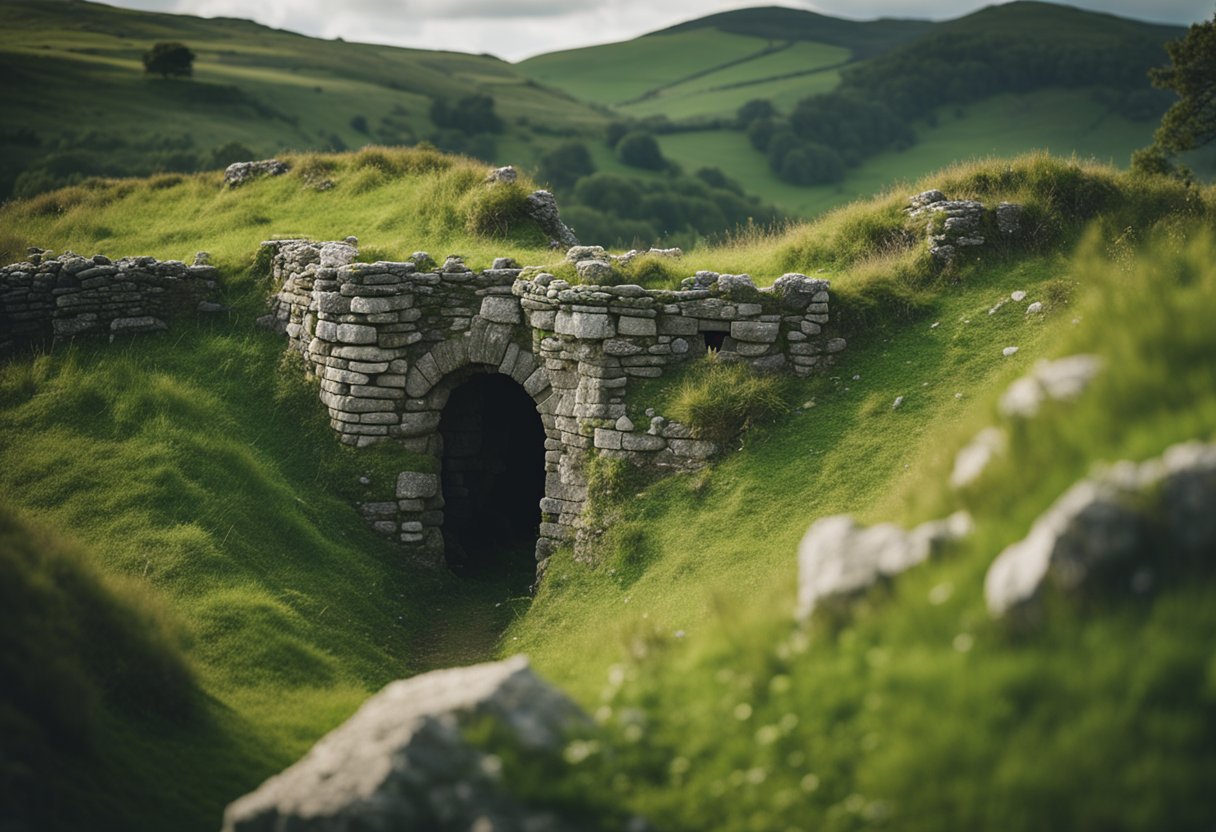
Ireland’s fairy folklore endures and dynamically interacts with present-day cultural expressions and tourism in our fast-paced modernity. It leaves an indelible mark on the narrative of Ireland’s heritage.
Tourism and Heritage
The allure of Ireland’s fairy forts, such as the renowned Grianán of Aileach, beckons cultural enthusiasts and casual tourists. These ancient sites serve as stewards of Irish lore, offering a tangible connection to the mythic past. Our efforts for preservation ensure that these identifiable fairy forts remain not merely as relics but as living cultural landmarks.
Visitors are captivated by the opportunity to stand where, according to tradition, the Aos Sí once held sway. The presence of these forts across the landscape helps sustain a sense of mystery and respect for their historical significance. Our commitment to heritage means advocating for the conservation of these sites so their stories and the lessons therein persist for future generations.
The tourism that centres around such mystical spots bolsters the local economy and underlines the importance of maintaining them as valued elements of Ireland’s cultural fabric. Through heritage tourism, we contribute to an authentic experience that impresses upon visitors the enduring impact of Ireland’s fairy folklore in contemporary life.
Conservation Efforts and Legal Protection
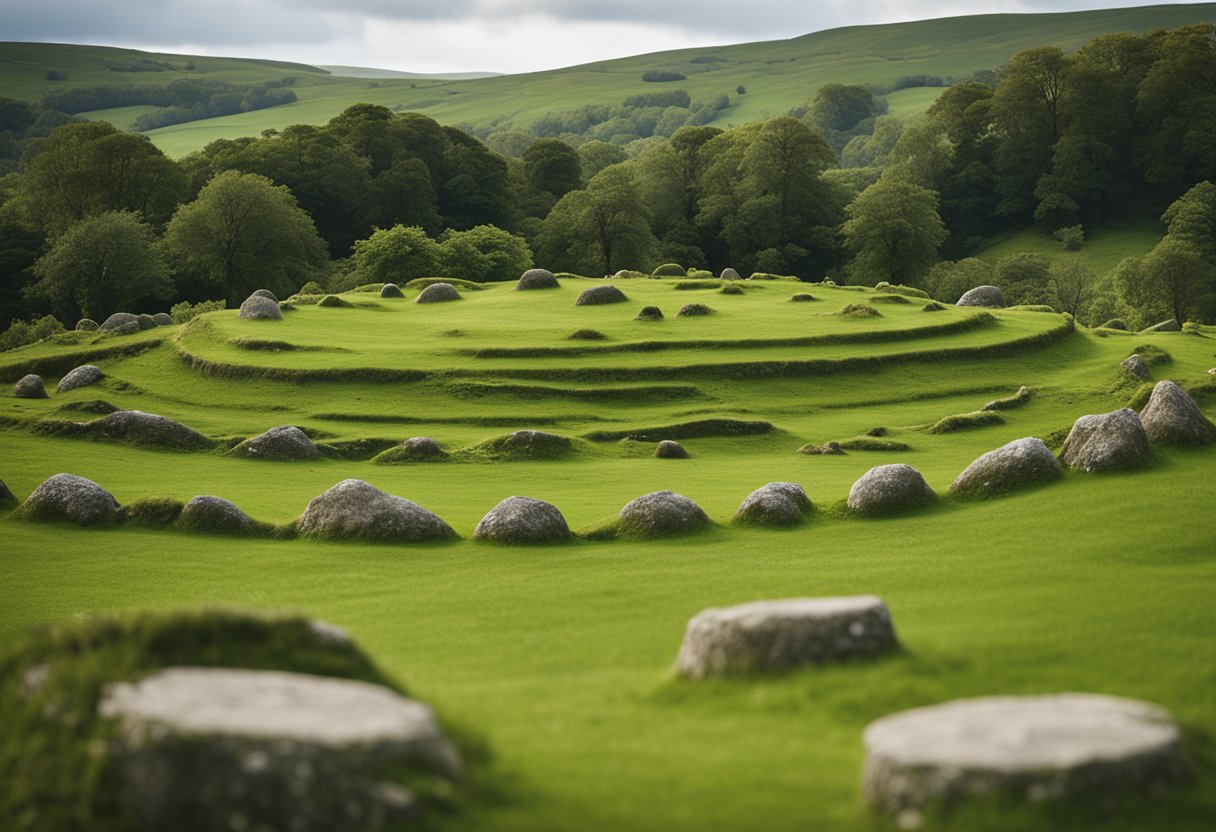
In Ireland, fairy forts hold a unique position, intertwining cultural heritage and environmental conservation. We observe national institutions and local communities working hand in hand to protect these archaeological sites, often considered sacred and steeped in folklore.
Role of National Institutions
National institutions such as the National Monuments Service safeguard Ireland’s fairy forts. Legislation like the National Monuments Act ensures that any impacts on these historical sites are carefully assessed and managed. Archaeologists are pivotal in these efforts, performing excavations and research to inform both preservation strategies and the general public about the historical significance of these sites.
Community Involvement
Community involvement is vital in protecting fairy forts, often stemming from a deep-rooted respect for the folklore surrounding leprechauns and fairies traditionally believed to inhabit these places. Local groups often collaborate with heritage organisations to maintain the integrity of these sites, and awareness campaigns encourage community-led preservation initiatives. This local stewardship has been essential for conserving these archaeological discoveries and embedding them within the cultural identity of the areas in which they are found.
Legendary Tales and Narratives
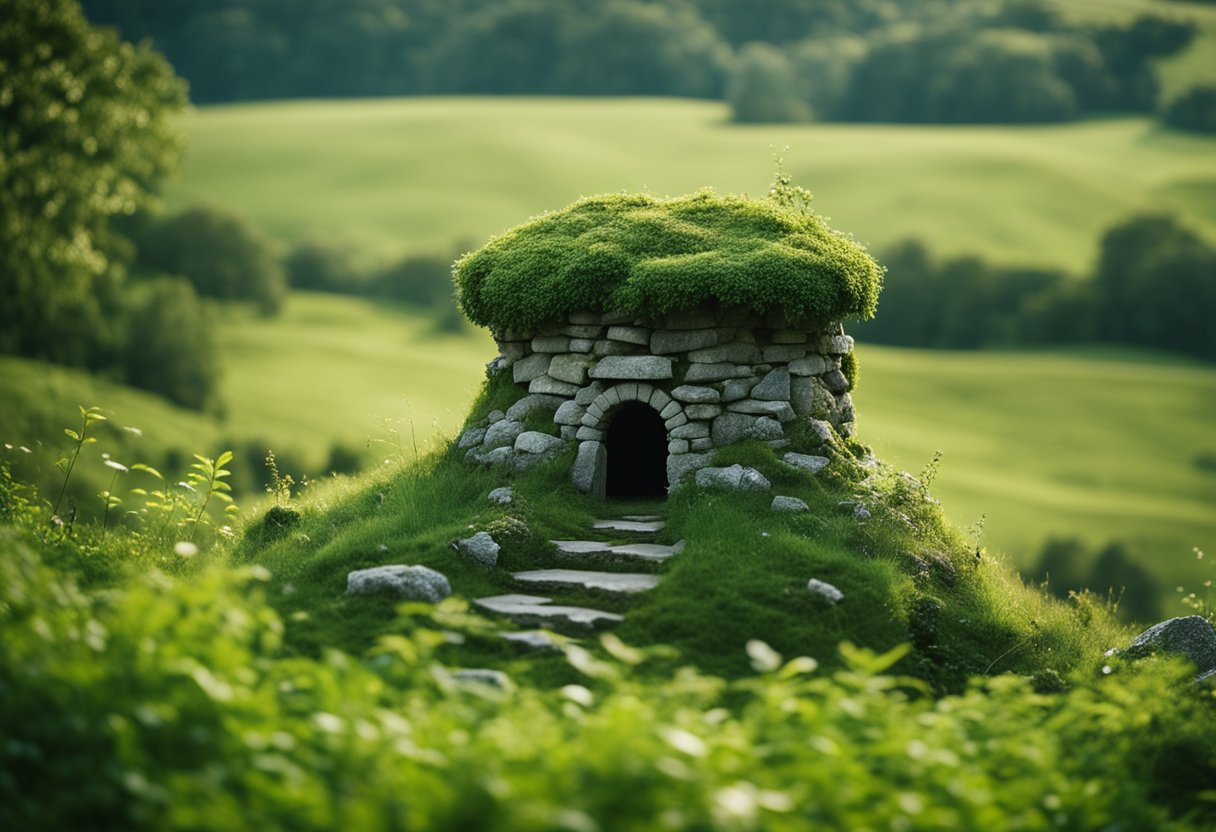
Ireland’s fairy forts, or raths or lios, are not just historical remnants but integral to our narrative heritage, encapsulating centuries of Irish folklore and myth. These ancient structures are often linked with stories of the supernatural and provide a window into the otherworldly aspects of our culture that still capture our imaginations today.
Famous Stories of Fairy Interaction
Within the rich tapestry of Irish folklore, accounts of fairy interactions are widespread. These beings, thought to inhabit these ancient forts, are central to many tales passed down through generations. The leprechauns — one of the most iconic creatures of Irish mythology — are often a focal point in these narratives. These solitary figures, cobblers by trade, are reputed to hoard pots of gold.
One cannot speak of fairy forts without mentioning stories of the other world. The forts are believed to act as gateways to this mythical realm, making them places of great power and mystery. Many narratives revolve around unsuspecting humans stumbling upon fairy celebrations or being lured into the forts by enchanting music, only to emerge years later with no time in the human world.
The intersection of the human and mythical worlds leads to tales of fortune, woe, and lessons learned. For instance, disturbing a fairy fort is a taboo in our folklore, often leading to misfortune or strange occurrences. The respect for these sites reflects their enduring enigma and the cultural importance of the folklore that entwines them.
In summary, the fairy forts of Ireland are as much about the physical as they are about the ethereal. Through these legendary tales, the forts remain a living part of our cultural landscape, reminding us of an Ireland with mystery and charm.
Economic and Legal Disputes
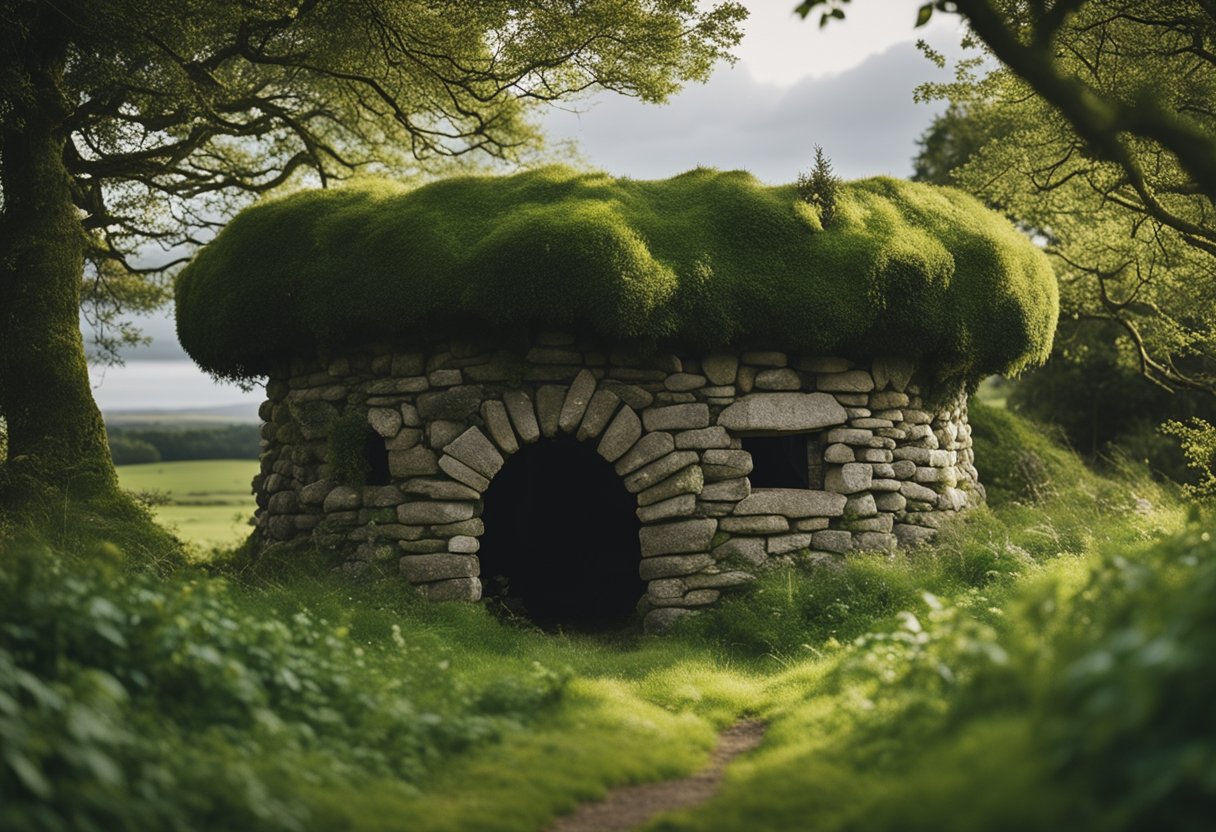
In discussing the economic and legal disputes surrounding fairy forts in Ireland, complexities often arise regarding land rights, cultural heritage preservation, and the modern impact on private and public development projects.
Land Ownership Controversy
The ownership and maintenance of land that includes fairy forts can lead to disputes in Ireland. These sites are often on private property but carry significant cultural value, sparking contention between landowners and preservationists. In some parts of Ireland, such as Cavan, fear of bad luck or retribution for disturbing these ancient sites often heightens the tension. These beliefs sometimes influence landowners to retain the forts untouched, affecting potential land use and economic value.
Notable Legal Cases
Several legal cases have highlighted the complex relationship between development and preservation throughout Ireland. For instance, a Kerry politician suggested that fairy forts were causing issues for local infrastructure projects, shedding light on how deeply ingrained these sites are in both folklore and socio-legal issues. Moreover, there have been situations where interaction with fairy forts led to public uproar and the involvement of figures like local priests, perhaps most notably in Matthew Stout’s archaeological works. Business magnate Sean Quinn faced backlash about destroying a fairy fort during a development project. Such incidents underscore the potential for fairy forts to spark legal challenges and economic consequences.
Natural Environment and Fairy Forts

In exploring Ireland’s natural heritage, fairy forts are a testament to the intricate connection between the island’s ecology and mythology. These ancient sites blend seamlessly with the landscape, housing a rich tapestry of plant and animal life as enchanting as the surrounding folklore.
Flora and Fauna
Fairy forts, intimately tied to the Irish countryside, are often surrounded by the sceach, the whitethorn or hawthorn bush. This plant is significant in Irish lore and is often seen as a portal or protection for the fairies. The presence of a thorn bush, particularly a solitary one, marks the sanctity of these forts, as it is commonly believed that damaging a search would invite misfortune.
The underbrush of these forts plays host to various bushes and plants, supporting diverse fauna. Predators, such as the Irish fox, may be found navigating the dense foliage in search of prey. These creatures contribute to the air of mystery, often associated in folklore with the guardians or inhabitants of the forts themselves.
Across the undulating Irish landscape, preserving these enclaves of nature helps us maintain a link to our ecological history and cultural heritage. Through careful observation and respect, we ensure that fairy forts remain part of Ireland’s vibrant ecosystem and storytelling tradition.
Fairy Forts in Popular Culture
In exploring Irish heritage, we’ve observed a fascinating intersection where fairy forts entwine with popular culture. These ancient ringfort remains are not only archaeological wonders but have also carved a niche in contemporary media and fiction, resonating with audiences worldwide.
In Literature: Fairy forts serve as evocative settings in fantasy novels, where authors often depict them as mystical gateways to other realms or as the abodes of supernatural beings. Their allure lies in their mystery and the folklore that shrouds them.
On Screen: These enthralling sites have been visually represented in films and television shows, sometimes as critical backdrops for science fiction and fantasy narrative developments. Their inclusion reverberates with the cultural significance attributed to these sacred places.
- Folklore and Science: Within the realm of science, fairy forts are studied for their historical and cultural value. However, they are reimagined with a mythical twist in the creative space, providing a rich vein of inspiration for speculative fiction where the lines between science and legend blur.
- Impact on Tourism: Our collective fascination with these structures has bolstered them as tourist attractions. Visitors are drawn to their storied past and the landscapes they adorn, solidifying their status in cultural consciousness.
This blend of tangible history and intangible legend cements fairy forts in the collective imagination, illustrating their enduring influence across different facets of popular culture. Whether encountered in a beloved book or seen gracing the silver screen, fairy forts continue to enchant and ignite curiosity, just as they have for centuries in Ireland.
Frequently Asked Questions
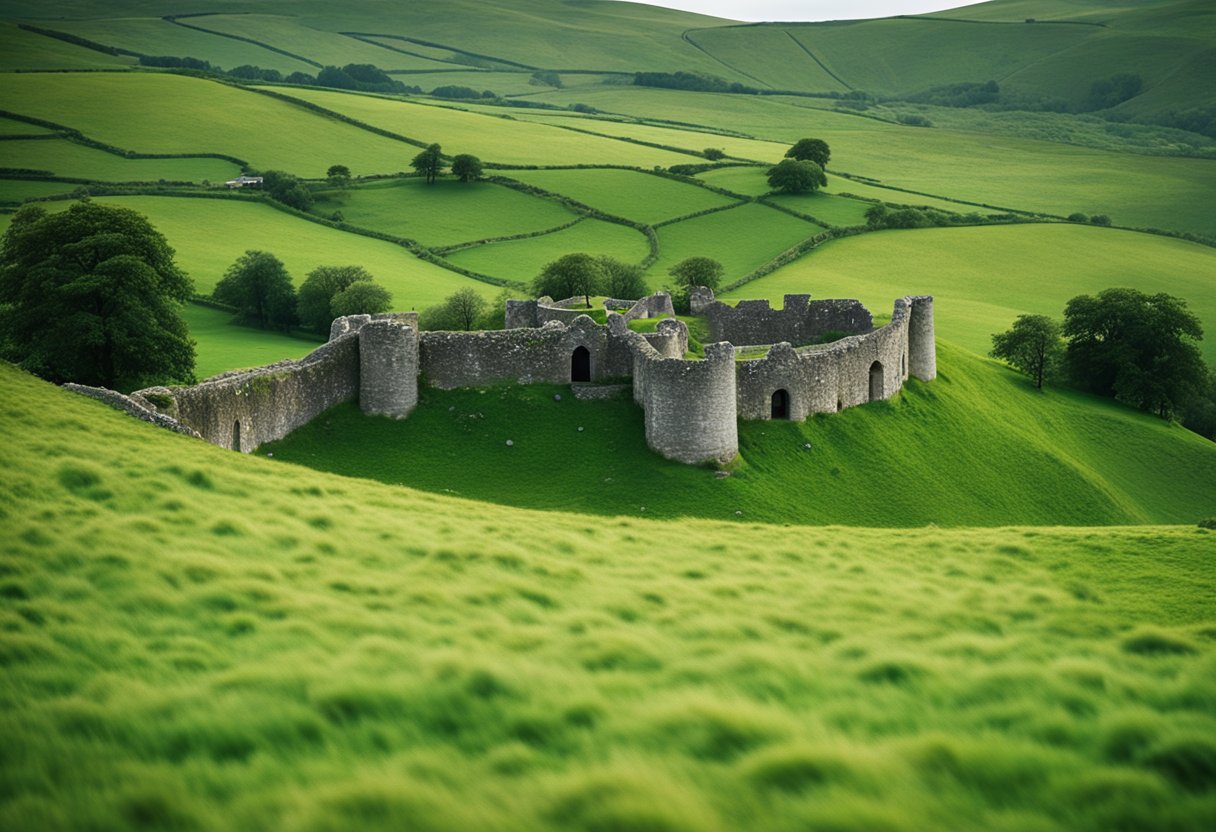
In addressing the enchantments of Irish folklore, we find that fairy forts and their associated tales hold a distinct place in the cultural fabric of Ireland. Below, we explore some of the most common inquiries about these mystical sites and their significance in Irish tradition.
What significance do fairy forts hold in Irish legends?
Fairy forts, also known as ringforts or raths, are often regarded as the dwellings of the ‘aos sí’, the supernatural beings in Irish folklore. These ancient structures are infused with tales of the fairies and are respected as places imbued with magic and mystery.
Can you describe the cultural importance of fairy trees in Ireland?
Fairy trees, usually lone hawthorns found in the Irish landscape, are believed to be sacred spots, marking the entrance to fairy realms. They play a crucial role in local lore, where traditions dictate they should not be cut down or disturbed lest one incurs the fairies’ wrath.
To what extent are fairy paths considered in Irish construction projects?
Fairy paths are reputed to be the invisible routes travelled by fairies. In Ireland’s past and occasionally even today, builders and homeowners have been known to amend construction projects to avoid disturbing these paths, prompted by long-held superstitions.
How are fairy rings interpreted in the context of Irish folklore?
Fairy rings, circular patterns of mushrooms or darker grass are seen in Irish folklore as portals to fairy worlds or as places where fairies dance. Disturbing a fairy ring is often thought to bring bad luck or the displeasure of the fairies upon the transgressor.
What stories are associated with the fairy raths of Ireland?
Fairy raths are legendary in Irish tales for being the fortresses of the ‘aos sí’. Stories abound of individuals trapped by fairy enchantments or have experienced time anomalies after visiting a rath.
In what ways has modern Ireland preserved the folklore surrounding fairy forts?
Modern Ireland has maintained an awareness and appreciation of these legendary sites, often integrating them into cultural education and tourism. Despite the push of modernity, many fairy forts are preserved for their archaeological value and place in the nation’s rich tapestry of myth and folklore.


